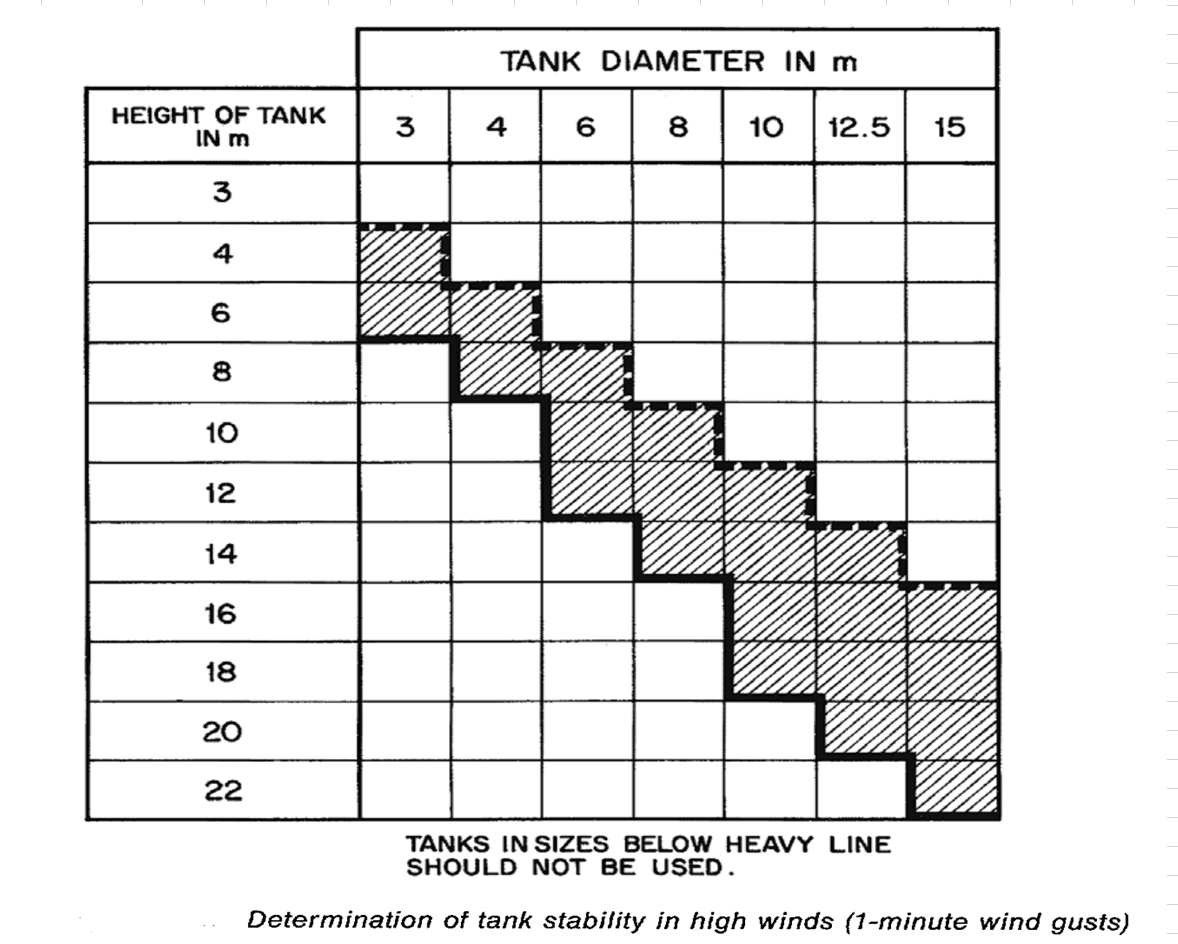Dear All,
Positive displacement pumps (e.g. reciprocating pumps) gives pressure at pump shut off towards infinity. So, systems in pump discharge circuit cannot be designed for pressure at pump shut off. Therefore, a relief valve shall be put just at the pump discharge itself.
The discharge of relief valve should be connected to suction of pump downstream of strainer.
Why there should be such a piping arrangement?Is there any concept behind it?
Also for calculation of required orifice size the equations whithin part 3.8 of API 520 should be used.In page 59 equation 3.9 contains a back pressure term.For positive displacement pumps because of that mentioned discharge arrangement this value equals to the pump suction pressure minus by the pressure drop at discharge line of PSV.But the discharge line size is unknown, so it is impossible to calculate the pressure drop.So what approach the dsigner should follow?
Generally the psv inlet line should follow the 3% rule but what about the discharge line specially in this case?
Thanks in advance.
Cheers.
|
|
Psv For Positive Displacement Pumps
Started by jprocess, Sep 11 2007 04:58 AM
6 replies to this topic
Share this topic:
#1

Posted 11 September 2007 - 04:58 AM
#2

Posted 11 September 2007 - 06:38 AM
My professional advice is: do not place any measure of confidence or assurance on a PSV furnished and installed by a positive displacement (PD) pump manufacturer – especially a built-in, integral type as is often the case with regards to gear pumps.
Do not misinterpret what I say. I don’t mean to infer that these PSV won’t work or that they are not “safe”. What I have found through the years (as have many major Chemical and Petrochemical companies) is that there is scarce and little documentation on the sizing and the criteria used to design and install these pump PSVs. These PSVs have literally evolved because of the need to protect the pumps themselves – not the process. They work – most of the time; and I always make sure to pipe their discharge back to the initial source of the fluid (usually a tank) – never back to the pump’s own suction line. I always make sure the pump’s discharge system is fully protected by the appropriately sized (calculated and documented) PSV for the worse credible scenario.
I would recommend and urge all engineers to follow the same basic guidelines. I worked on a bunch of DuPont projects and even with that backup I was unable to obtain the required sizing documentation for these type of PSVs. Needless to say, we were not allowed to rely on them for a safe solution and I certainly agreed with that logical principle.
My answer to this general question is: do not rely on an unidentified or undocumented design for a safety relief device. Follow the practices and logic detailed out in API RP 520 parts 1&2.
#3

Posted 11 September 2007 - 11:15 AM
I can't agree with Art enough but I am at odds with many a client over this, including one I'm working with right now.
Why the PSV discharge is often piped back to the suction of the pump? Cost.
If your question refers to the vendor supplied PSV then you are correct about wondering how the PSV and its associated lines are sized and you have every right to be concerned. If you are installing your own PSV then you have full control over the sizing.
Why the PSV discharge is often piped back to the suction of the pump? Cost.
QUOTE
For positive displacement pumps because of that mentioned discharge arrangement this value equals to the pump suction pressure minus by the pressure drop at discharge line of PSV.But the discharge line size is unknown, so it is impossible to calculate the pressure drop.So what approach the dsigner should follow?
Generally the psv inlet line should follow the 3% rule but what about the discharge line specially in this case?
Generally the psv inlet line should follow the 3% rule but what about the discharge line specially in this case?
If your question refers to the vendor supplied PSV then you are correct about wondering how the PSV and its associated lines are sized and you have every right to be concerned. If you are installing your own PSV then you have full control over the sizing.
#4

Posted 11 September 2007 - 04:47 PM
Though I don't normally "chime in" without adding to the points being made, I feel compelled to do so here. If at all possible, pipe the PSV discharge back to the source of liquid fed to your PD pump. If you do not do so, it is easy to see that you could have a small quantity of liquid trapped in a loop and absorbing energy from the pump. Rapid heatup and vaporization of the liquid is possible. Also, as Art says, do NOT rely on the internal PSV. I would expect it to be a perfectly fine and functional PSV, but where's the documentation? You wouldn't accept an undocumented PSV protecting other equipment in your plant, so why even think about accepting one for a PD pump? Simple answer: Don't do it.
Phil or others may want to offer additional comments, but I do not worry about the 3% rule for the PSV inlet, or the 10% dP on the discharge for a simplex PD pump. In a relieving situation, the PSV will need to relieve at a certain rate (usually the pump's capacity), and it will supply enough pressure to "push" the required amount through the PSV. I am NOT saying you should skip any of the calculations; I am saying that the situation is quite different from most PSV's and so some of the normal practices don't necessarily make a lot of sense here. But, as Phil recently pointed out in a related thread, "who says that the codes and common sense are related?"
Doug
Phil or others may want to offer additional comments, but I do not worry about the 3% rule for the PSV inlet, or the 10% dP on the discharge for a simplex PD pump. In a relieving situation, the PSV will need to relieve at a certain rate (usually the pump's capacity), and it will supply enough pressure to "push" the required amount through the PSV. I am NOT saying you should skip any of the calculations; I am saying that the situation is quite different from most PSV's and so some of the normal practices don't necessarily make a lot of sense here. But, as Phil recently pointed out in a related thread, "who says that the codes and common sense are related?"
Doug
#5

Posted 12 September 2007 - 05:22 AM
If the PSV is properly sized then the piping/flow should take care of itself. However we still need to be aware of the system line losses. If the losses are high, the PD pump will make up for it but then this increase in pressure to push the fluid through the PSV system is not a good thing. There is potential as I see it to exceed the pressures you are trying to minimize.
#6

Posted 12 September 2007 - 06:49 AM
ALL,
Please allow me to drop my opinion.
I have the opinion that both option may be adopted subject to fluid condition.
I) Pipe back to Tank
II) Pipe back to pump suction
If the pump is transffering SATURATION (or closed to) liquid, OPTION I may be better as heating on recirculation fluid (OPTION II) causing vaporization follow by cavitation may potentially damage the pump. Vapor generation may potentially trap in suction damper (subject to piping arrangement) cause inefficient dampar operation follow by pulsating and vibration. Of course the downside of OPTION I is cost.
If the fluid is SUBCOOLED (very far from Saturation) liquid i.e. lube oil, dead crude, etc, i believe OPTION II may be adopted. General safeguarding like Temperature alarm at pump suction may be used.
I tends to agree with Phil that the general guidelines e.g. 3% or 10% rules shall always be followed especially when we dealing with HIGH VISCOSITY fluid.
JoeWong
Please allow me to drop my opinion.
I have the opinion that both option may be adopted subject to fluid condition.
I) Pipe back to Tank
II) Pipe back to pump suction
If the pump is transffering SATURATION (or closed to) liquid, OPTION I may be better as heating on recirculation fluid (OPTION II) causing vaporization follow by cavitation may potentially damage the pump. Vapor generation may potentially trap in suction damper (subject to piping arrangement) cause inefficient dampar operation follow by pulsating and vibration. Of course the downside of OPTION I is cost.
If the fluid is SUBCOOLED (very far from Saturation) liquid i.e. lube oil, dead crude, etc, i believe OPTION II may be adopted. General safeguarding like Temperature alarm at pump suction may be used.
I tends to agree with Phil that the general guidelines e.g. 3% or 10% rules shall always be followed especially when we dealing with HIGH VISCOSITY fluid.
JoeWong
#7

Posted 02 June 2010 - 06:29 AM
Hi,
Agreed with Art, return back the PSV discharge to the source tank. Hydraulic Institute advises the same. Scanned copy is attached. refer pg-2
DBS
Agreed with Art, return back the PSV discharge to the source tank. Hydraulic Institute advises the same. Scanned copy is attached. refer pg-2
DBS
Attached Files
Similar Topics
Centrifugal PumpsStarted by Guest_panoska_* , 01 Feb 2025 |
|

|
||
Selection Of Type Of Pumps For "negative" Npsha And Solution TStarted by Guest_linda_pro_* , 29 May 2024 |
|

|
||
Positive Displacement Pump Psv Discharge LocationStarted by Guest_QuantumEng_* , 24 Jul 2024 |
|

|
||
Positive Isolation PrerequisiteStarted by Guest_omid64_* , 11 Sep 2017 |
|

|
||
Vibration Of The Pump (Reciprocating Pumps / Plunger Pumps)Started by Guest_vsedhuraman_* , 06 Oct 2023 |
|

|

 FB
FB











